Slow Sprint Workshop
This is how you make: buns
Buy white bread, grind it with a glass of water, and put it in 15 cm long sausages. Buy borax with sesame seeds, scrape the sesame seeds from them and sprinkle on the bread sausages.
The result: buns!
(Zeev Engelmayer, Journey to Vulgaria, Recipes from the Elaborate Land)
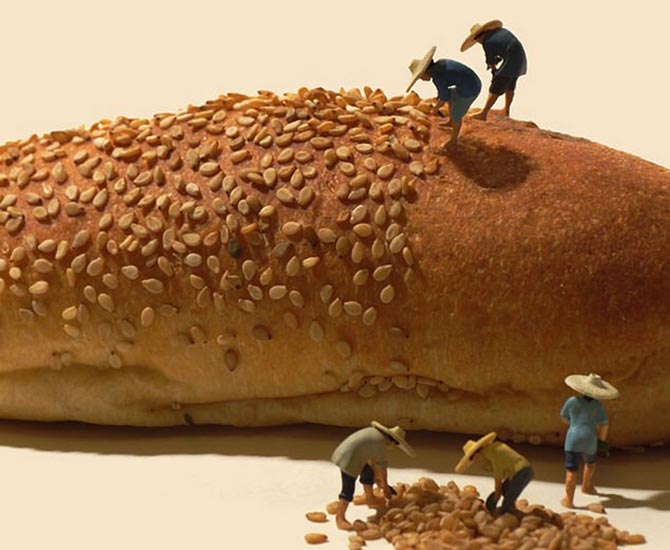
Work by Tatsuya Tanaka
+
Avni Institute of Arts and Design has a tradition of “sprint courses” – six sessions of project based learning (PBL) leading to product development in the field chosen by the lecturer.
Yotam chose to lead a sprint on the subject of slow design, under the appropriate name “Slow Sprint”. A little about the field below.
The leading concept was the design of products intended for production by underprivileged or disabled populations that are marketed to durable end customers. The method was a reinterpretation of the production line method – not necessarily in a way that would maximize the result through saving time and money, but through satisfying interesting work for as many people as possible.
Researching the needs and capabilities of these people (theoretical or real), the existing production mechanisms and the marketing platforms available around the world formed the basis of the design.
Slow Design, part of the socio-cultural movement The Slow Movement, is a super term that gathers many values under it: ecology, recycling, traditional craft, localism, fair trade, cooperatives, etc. – sort of New branding for the term “sustainability” which has started to get tired in recent years.
In this course, Yotam connected the slow design approach to a model from the field of political science called the “fourth sector”.
There are three types of sectors in the Israeli economy:
+Public-government: based on taxes and government revenues
+Private-business: the goal is profits and economic growth
+Associations and non-profits: without a profit goal but a contribution to the community
The fourth sector offers a merger between the various sectors in the economy, not a cancellation of the existing division but a merger of capabilities, assets and resources:
The business sector should begin to take into account and take into account the environmental, social and economic effects of its activities, especially towards the direct communities in which each organization operates, associations and non-profits from the third sector should in some ways behave like businesses that strive for business and financial success, plan for the goal of economic independence and formulate an effective growth strategy And the public-government sector needs to make use of the many and enormous resources at its disposal in order to serve the good of the citizens by using these resources more intelligently and efficiently.
+
We have compiled for you some products from the course at the Avni Institute.
3D Carton | A series of self-assembly toys | Designed by Dana Kadosh
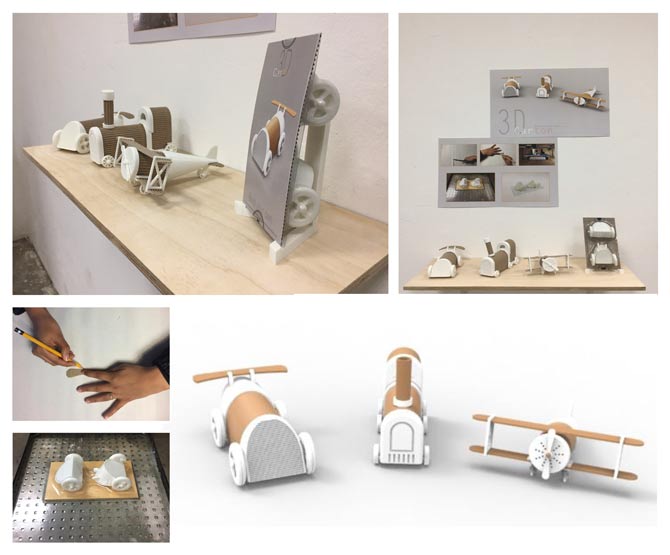
“The product is intended for collectors and is produced by children at risk. The product is made of 3D printed parts combined with corrugated cardboard parts that the children cut and pack.”
OH deer | concrete and branches coat racks | Designed by Noa Shier
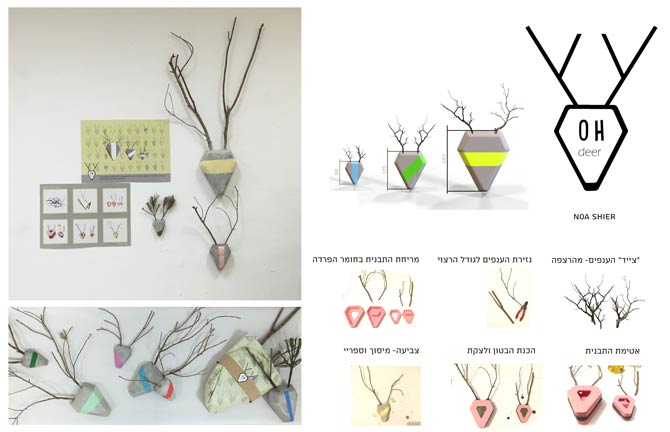
“There are currently about 800,000 youth in Israel between the ages of 12-18, about a quarter of whom live in various risk situations, in which the child’s rights and self-confidence are compromised, along with the ability to learn and acquire skills. The project can be part of the care of the children and help in integrating them back into the community, With the help of selling the products they made themselves, they will gain a little satisfaction, raising their confidence and morale. The choice of the deer with the branches was due to the desire to create a series that expresses uniqueness that breaks out of the frame and to create a parallel to the concept of TROPHY: an object of a hunter for the purpose of sport for people of what is considered to be a high class.”
TETRIS | Colored candles | Designed by Shai Ben Zohar
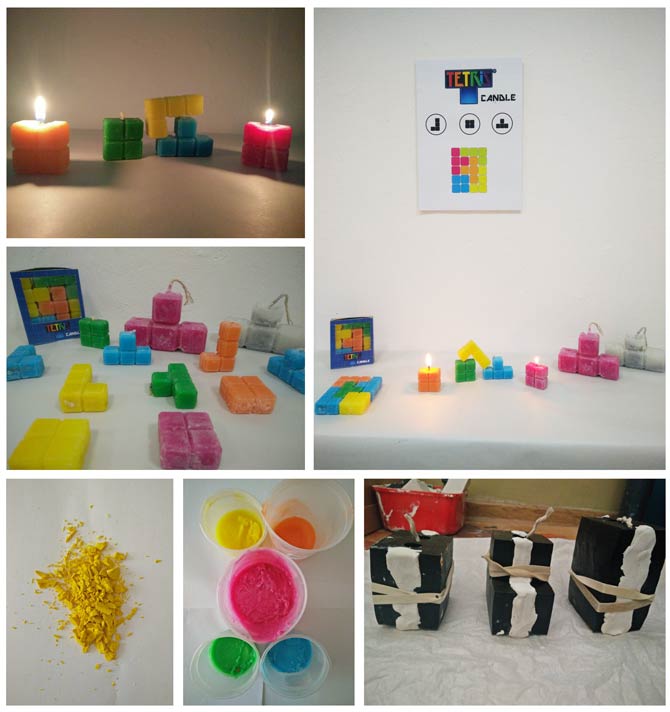
“I created candles inspired by the game of Tetris following acquaintances with the association “Shokulo Tov” in Lod for supported employment and social rehabilitation for people with disabilities and the rehabilitation factory “Yozmat Or” in Modi’in which employs the mentally challenged – both concentrate on the production of candles and wax.”
The Tetris game itself, by the way, has been proven to accelerate rehabilitation in many cases of trauma and post-trauma. You can read about it in the Atlantic article here at the link.
Beads and jewelry from snack bags | Designed by Avishag Malihi
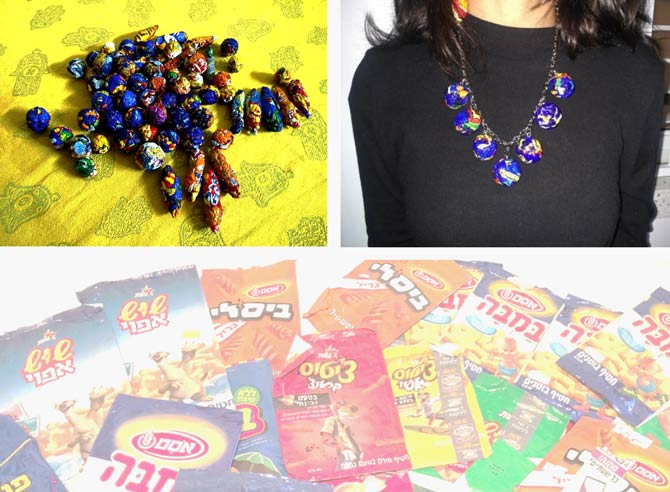
“For two years, I collected the snack bags I ate. The collection grew out of my curiosity to work with the material the bag is made of. There are different types of snacks, different sizes of bags and different colors. The snack bags are not recyclable. I chose a group of girls dealing with eating disorders as workers in the production chain. This project will provide an answer by touching the material and turning it into a new raw material from which jewelry will later be made”
Aluminum profile mezuzah | Designed by Yam Sad’e
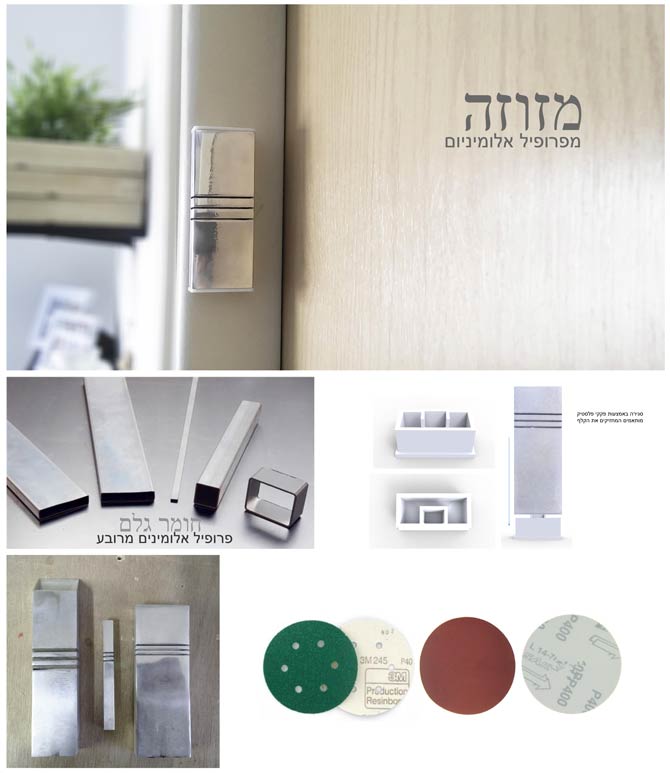
“Reuse of leftover aluminum profiles to design mezuzahs in a minimalist style. The meditative qualities of sanding at different levels of fineness and the recycled raw material that becomes more and more luxurious with the polishing can suit many populations of contenders. The small part that holds the paper is made in 3D printing and closes the product.”
REAL MAMAZ | Homemade dishes from natural ingredients | Designed by Shlomi Amar
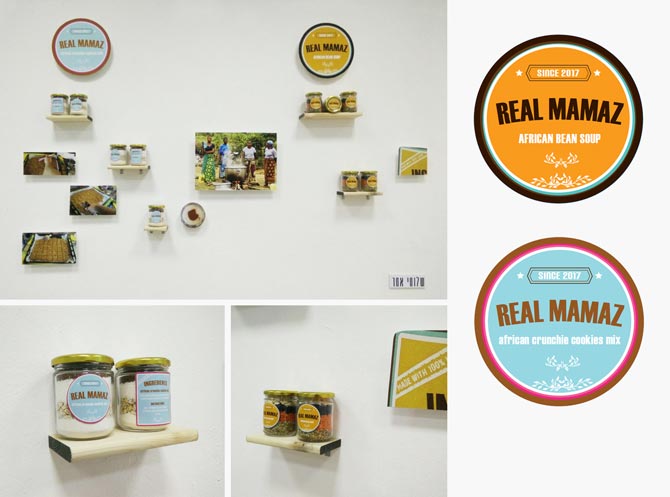
“When I approached the project I had several directions and after research and conversations I discovered that when you strengthen and empower the women in society the whole society improves and prospers and this is the main goal to create communities that work and function in their own right, another aspect is that most of the mothers in the areas in question cannot work because they take care of the children and take care of the house. I searched Classic African recipes and I drained the dry ingredients into a jar, with each layer in the jar being another step in the production line that produces another workplace. I chose warm retro color combinations to give the product a personal character. For the graphic work, I was helped by Betel Kadosh, a graphic design company, and together we distilled the stickers and prints.”
Yotam delivered the course the first time to product design students at Ort Singlovsky College and the second time to industrial design students at the Avni Institute and time after time the students surprised with original ideas, in-depth research proposals for the sharing of diverse populations, collaborations with students from different departments and even contacted factories and design stores for Research the target audience.
+
This is exactly the power of slow design – to connect, feel, learn and teach.
Categories
- Art »
- Bricolage »
- Collaborations »
- Courses & Education »
- Exhibitions »
- Inspiration »
- Our Clients »
- Projects »